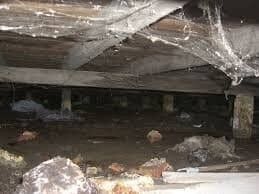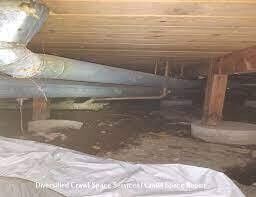
What is Crawl Space Insulation?
Crawl space insulation is a crucial component of building construction that helps regulate temperature and moisture levels in a home. It involves the installation of insulation materials in the crawl space, which is the area between the ground and the bottom floor of a house. Proper crawl space insulation can help prevent energy loss, improve indoor comfort, and protect against moisture-related issues such as mold and rot.
The Importance of Crawl Space Insulation
Insulating your crawl space offers several benefits:
Energy Efficiency:
Crawl space insulation helps reduce heat transfer between the ground and your home’s interior, minimizing energy loss and lowering heating and cooling costs. Proper insulation can also prevent drafts and create a more comfortable living environment.

Moisture Control:
A well-insulated crawl space acts as a barrier against excess moisture, preventing condensation, mold growth, and structural damage. Insulation materials with moisture-resistant properties, such as foam boards or closed-cell spray foam, are commonly used in crawl space applications.
Air Quality:
Insulating your crawl space can improve indoor air quality by preventing the entry of allergens, pollutants, and pests. It helps create a healthier living environment for you and your family.
Crawl Space Insulation Installation Process
The following steps outline the general process of crawl space insulation installation:
1. Preparation:
Ensure the crawl space is clean and free of debris. Seal off any vents, cracks, or openings to prevent air and moisture infiltration.
2. Moisture Barrier Installation:
Install a vapor barrier on the crawl space floor and walls to prevent moisture from seeping into the space. This barrier helps protect the insulation and the structural elements of your home.

3. Insulation Material Selection:
Choose the appropriate insulation material based on your climate, budget, and specific needs. Common options include fiberglass batts, foam boards, spray foam insulation, and reflective insulation.
4. Insulation Installation:
Cut and fit the selected insulation material to cover the crawl space walls, floor joists, and any exposed pipes or ductwork. Ensure a snug fit to maximize energy efficiency.
5. Sealing Air Leaks:
Seal any gaps, cracks, or joints in the crawl space with caulk, expanding foam, or weatherstripping to prevent air leakage and improve insulation effectiveness.
6. Professional Assistance:
Crawl space insulation installation can be complex and require specialized knowledge. Consider hiring a professional contractor experienced in crawl space insulation to ensure proper installation and maximize the insulation’s benefits.
FAQs about Crawl Space Insulation
What is the average cost to repair a crawl space?
What are the benefits of crawl space insulation?
Important Facts and Statistics
Here are some important facts and statistics about crawl space insulation and related topics:
- The average cost to repair a crawl space is $6,000 as part of an encapsulation process that includes improving structural elements like beams and joists. (source)
- Black mold, including Alternaria and Cladosporium, is one of the most common types found in crawl spaces. (source)
- A crawl space is a small area between the ground and the bottom floor of a house, providing additional space for utilities and infrastructure. (source)
- The use of vinegar is a popular method for mold removal in crawl spaces due to its effectiveness against bacteria. (source)
- Crawl space repair costs range from $2,500 to $8,000, depending on the extent of restoration required, such as foundation repair, water damage repair, or insulation replacement. (source)
By understanding the importance of crawl space insulation installation and its benefits, you can make informed decisions to ensure a healthy and energy-efficient home.



